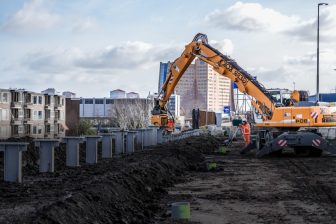Healthy wetlands: an effective climate change response
Wageningen, The Netherlands – The conservation and restoration of ecosystems, in particular wetlands, could be one of the most cost-effective strategies to adapt to the impacts of climate change. Wetlands can reduce the negative effects of sea level rise, extreme weather like heavy rainfall, increased temperatures, severe storms and related phenomena such as melting glaciers, prolonged droughts and increased floods. 2008-05-20 Wetlands International will present facts and its views on adaptation at the Convention on Biological Diversity (CBD) in Bonn.
One of the main agenda items of this Convention on Biological Diversity is the role of Biodiversity in Climate Change. Recommendations by CBD will directly influence the adaptation policies of countries and indirectly of NGOs and global donor countries and institutions such as GEF and World Bank. Wetlands International calls the Contracting Parties to the Convention on Biological Biodiversity (CBD), which will take place from 19-30 May 2008 in Bonn, to agree on the need to ensure wetland conservation and restoration is included as part of climate adaptation strategies. Currently, there is hardly any recognition of the role of wetlands in adaptation strategies to climate change.
Many types of wetlands greatly increase our resilience to climate change impacts like storms, floods or droughts. For example, mangrove forests and coral reefs are natural buffers against impacts of sea level rise and storms. Floodplains, peatlands and lakes reduce peak flood flows in periods of extreme rainfall and can partly compensate the impacts of glacier melt. Due to their ability to store and slowly release water, these wetlands can also be a vital lifeline in periods of extreme droughts. Furthermore wetlands provide livelihoods for many millions around the world. Conservation and restoration will support maintenance of community resilience to changes to their livelihoods driven by climate change.
Inland and coastal wetlands are however being lost and degrade faster than any other ecosystem type in the world. This continuing trend will considerably magnify the problems that climate change will bring to nature and people.
Wetlands International derives its recommendations from decades of research and ecosystem management in areas vulnerable to climate change. This includes in particular restoration of wetlands in high altitude areas such as the Himalayas which are already affected by glacier melt, arid areas such as the Sahelian floodplains which are expected to be confronted with increased droughts, and coastal areas such South-east Asia and the highly vulnerable West African coastline which will have to deal with rising sea level and extreme storms and floods.
U las zojuist één van de gratis premium artikelen
Onbeperkt lezen? Profiteer nu van de introductieaanbieding voor € 10,- per maand.
Bent u al abonnee?



